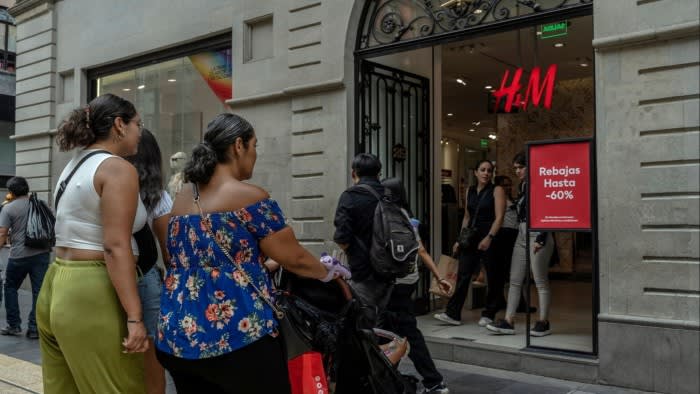Unlock the Editor’s Digest for free
Roula Khalaf, Editor of the FT, selects her favourite stories in this weekly newsletter.
Fashion is all about standing out from the crowd. That can be difficult as the throng becomes more tightly packed, as Hennes & Mauritz well knows.
New H&M chief executive Daniel Ervér has been trying to revive the Swedish retailer as the competitive fast-fashion market gets tougher. The likes of ecommerce group Shein are worsening the pressure H&M already felt from Zara owner Inditex and Primark. The recent improvement at the UK’s Marks and Spencer shows even the most improbable turnarounds can happen. But H&M’s investors will have to be patient.
That became obvious this week when H&M warned sales at the start of its second half had started badly. Poor weather in key markets would mean June sales down by a worse than expected 6 per cent year on year, H&M warned. Its shares dropped 13 per cent on the day, a dramatic reaction to one month’s performance. But investors were already doubtful about the aim of lifting operating profit margins this year to 10 per cent — from 6.2 per cent in 2023. That now looks even more unlikely.
The timing was unfortunate. H&M’s shares are up more than 10 per cent for 2024 so far. Investors were starting to have faith H&M could get close to its margin target. Ervér had been tackling problems that had caused H&M — once Europe’s biggest clothing retailer — to slip behind, such as speeding up its supply chain to react to trends faster.
H&M is yet to abandon the profitability goal but Ervér admitted “the conditions” for hitting it “had become more challenging”, citing the appreciation of the Swedish crown and freight costs.
The big question is how H&M can distinguish itself to achieve the kind of accelerated sales growth it needs. It can no longer compete against the likes of Shein and Temu on price. Ervér has been tackling H&M’s drab stores but he still has a long way to go to catch up with Zara, which is focusing on larger, showier outlets.
One option is to differentiate via design, says Deutsche Bank’s Adam Cochrane. That is easier said than done.
Ervér trumpets the size of H&M’s in-house design team, one of the largest in the industry, yet also admits that improving fashionability is “hard”. Indeed, it is rarely formulaic or predictable.
H&M trades at a 26 per cent discount to Inditex on a forward/price earnings basis. Unfortunately for Ervér, it looks set to keep trailing the rest of the crowd.


